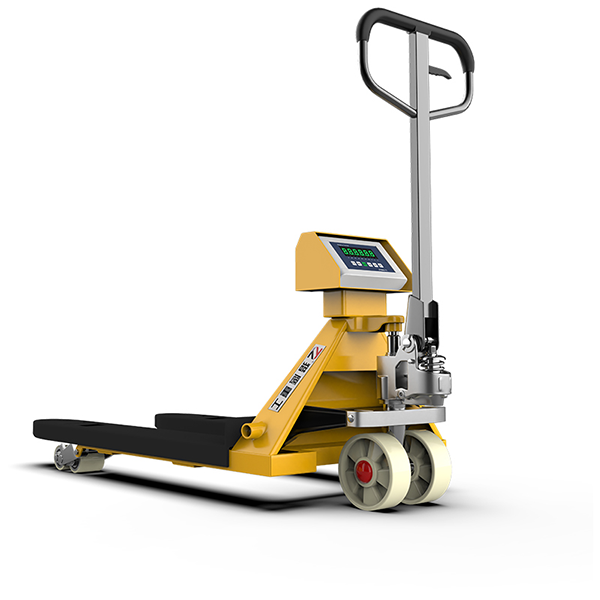Ratchet Chain Binder How to Use: A Step-by-Step Guide
Ratchet Chain Binder is an indispensable tool in logistics and transportation, construction machinery and heavy equipment fixing. It tightens the g80 alloy steel chain by means of a ratchet mechanism to ensure that the goods are stable and do not shift during transportation.
However, improper operation or neglect of safety standards can lead to equipment damage or even serious accidents. Combining international production standards (e.g. EN 12195-2, ISO certification) with industry best practices, we provide you with a detailed analysis of the proper use of ratchet tensioners, safety regulations and maintenance tips to help you efficiently complete your work and extend the life of your tools.
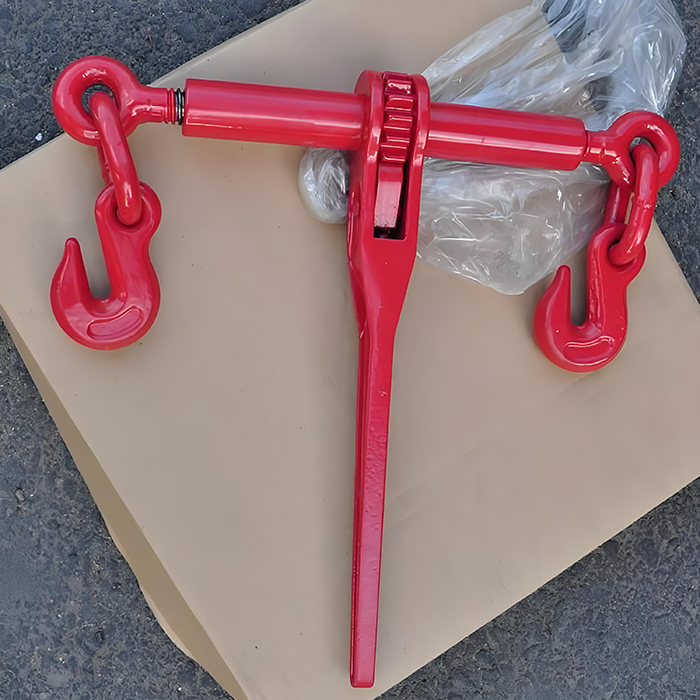
1. The core function of the ratchet tensioner and the application of the scene
Ratchet tensioner is designed for high-intensity load, widely used in the following scenarios:
Heavy equipment transportation: such as excavators, bulldozers and other construction machinery fixed.
Containers and flatbed trailers: to ensure that the goods are not shifted by bumps in sea or land transportation.
Timber and steel bundling: preventing loosening or slipping by chain tension.
Its core strengths are:
Precise control of tension: the ratchet mechanism allows gradual tightening, avoiding damage to the goods by over-pressurization.
High safety factor: Conforms to standards such as EN 12195-2, with a working load (WLL) of more than 12,000 lbs.
2. Standardized operation process: 7-step safety use guide
Step 1: Select matching chain and tensioner
Chain Grade & Size:
Grade 70: For light loads, economical choice.
Grade 80/100: made of alloy steel, strong wear resistance, recommended for heavy equipment.
Chain Diameter: Common sizes are 1/4 inch to 1/2 inch, the larger the diameter, the higher the load capacity.
Tensioner Specifications:
Ensure that the working load (WLL) of the tensioner is ≥ the WLL of the chain. e.g., a 3/8-inch Grade 70 chain would need to be paired with a tensioner with a WLL ≥ 6,600 lbs.
Reference Product:
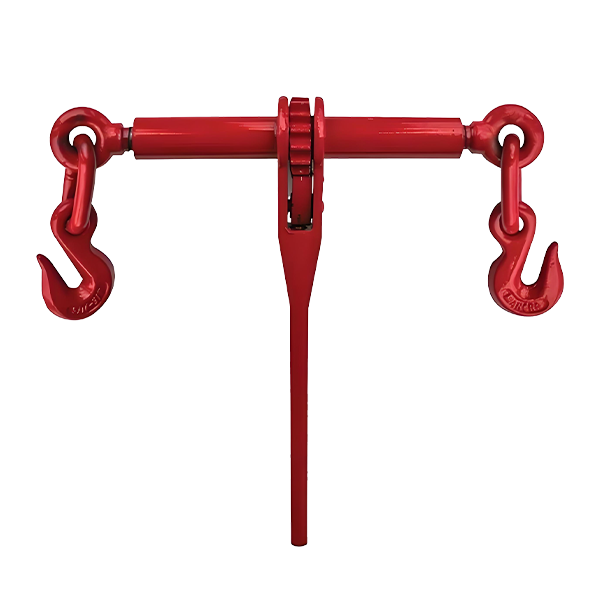
Also recommended: Heavy Duty Lever Load Binder
Step 2: Check Equipment Condition
Chain: No corrosion, deformation or broken links.
Tensioner: no cracks in hooks, no wear on ratchet gears, and smooth handle movement.
Step 3: Correctly install the chain and tensioner
First use the binder chain with grab hook to go around the cargo and hook the anchor points on both sides of the trailer.
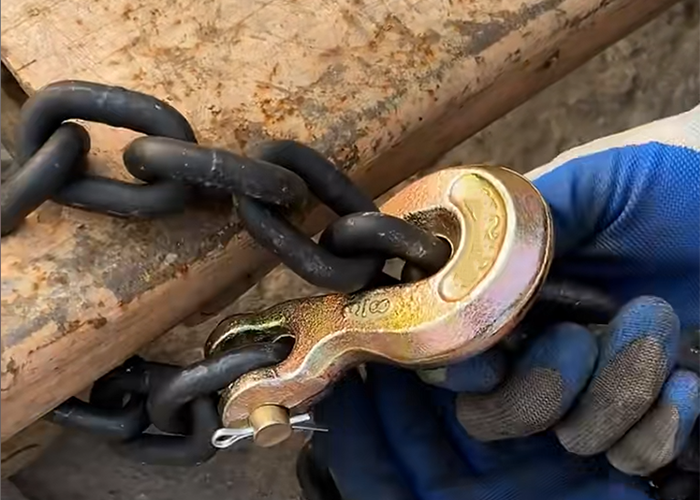
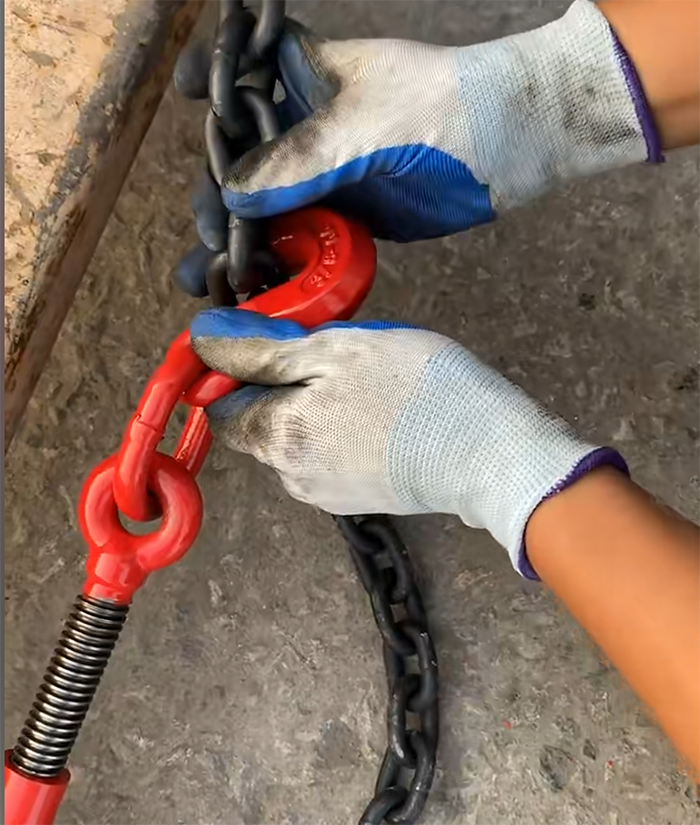
Adjust the tensioner hooks to a half-open state for subsequent tightening.
Make sure the chain is not twisted and the tensioner is aligned with the chain direction,this is different from heavy duty ratchet tie down straps.
Step 4: Gradual tightening of the chain
Turn the handle clockwise to gradually apply tension through the ratchet mechanism.The ratchet position switch controls the ratchet forward and reverse.
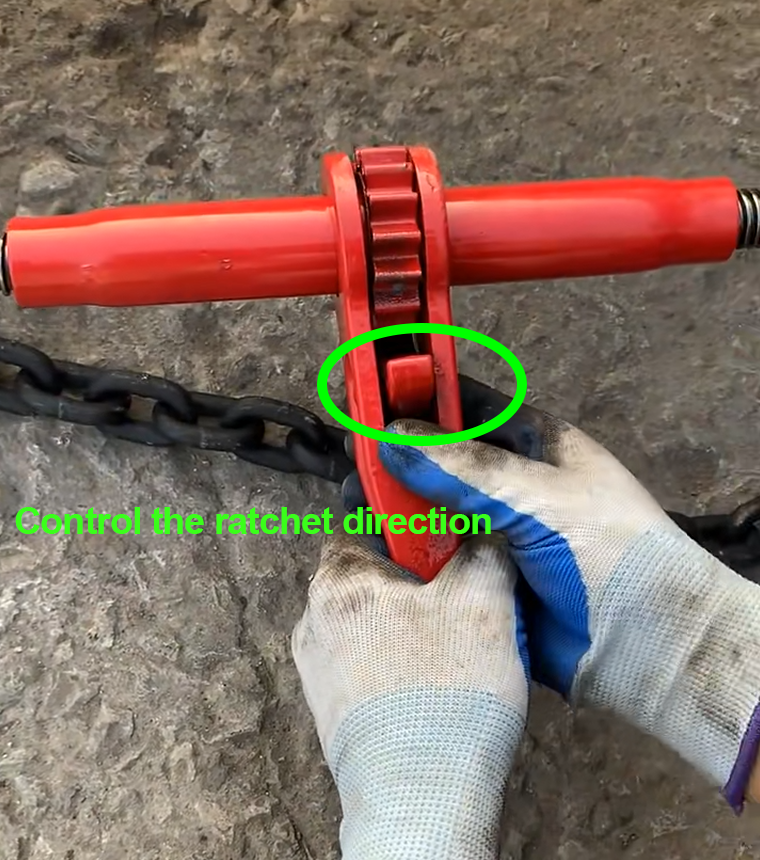
Key Tip:
When you hear a “click” to indicate the ratchet is locked, continue to rotate until the chain is tight but not overstretched.
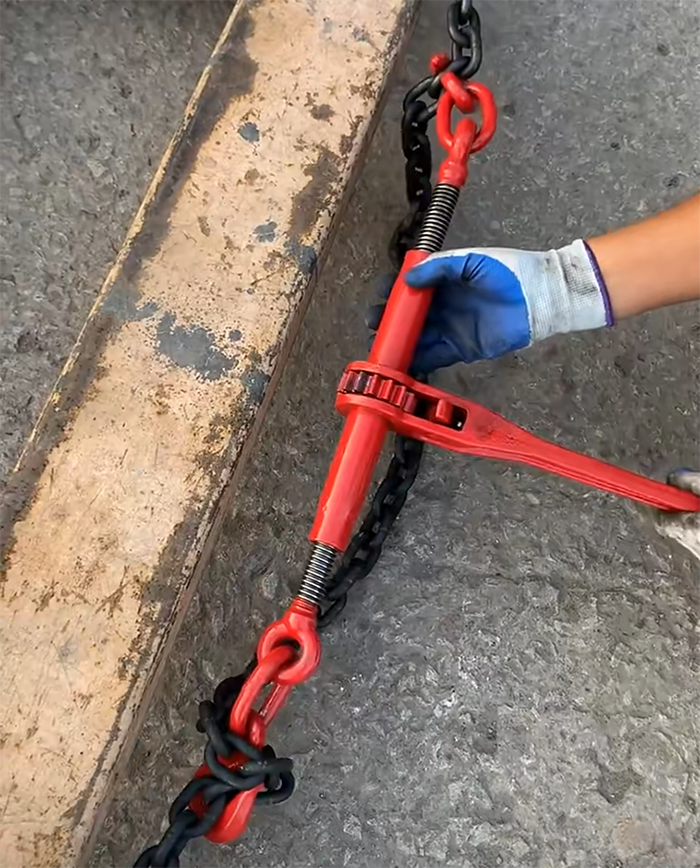
Use a Tension Meter to ensure that the tension is within 20% of the chain WLL.
Step 5: Locking Safety Device
Use a safety pin or latch to secure the handle to prevent accidental release during transportation. The use of tape or rope as a substitute is prohibited.
Step 6: Complete inspection
Verify that there is no slack in the chain and that the hook is fully closed.
Verify that the center of gravity of the cargo is balanced to avoid overloading on one side.
Step 7: Release chain tension
Slowly release tension by turning handle counterclockwise. Note: The lever tensioner may spring back due to the release of stored energy, so careful operation is required.
3. Safety Regulations and Common Error Avoidance
3.1 Prohibited operation behavior
Overloading: Even a short overload may cause damage to the internal gears.
Neglecting angular adjustment: the angle between the chain and the horizontal plane should be ≥45° to evenly spread the load.
Use of worn equipment: Rusted or deformed hooks need to be replaced immediately.
3.2 Environmental adaptation measures
Extreme temperature: Select tensioners with temperature resistance ranging from -40℃ to 120℃ (e.g. high carbon steel + powder coated models).
Humid environment: Give priority to galvanized or corrosion-resistant materials and spray lubricant regularly.
4. Maintenance and Storage Suggestions
4.1 Daily maintenance
Cleaning: Wipe the hook body and chain after use to remove mud and chemical residues.
Lubrication: Spray silicone-based lubricant every month to keep the ratchet mechanism flexible.
4.2 Long-term storage
Dry and Protect from Light: Avoid UV degradation of polyester webbing.
Hanging storage: prevent the hook body from being deformed by pressure.
5. How to choose a cost-effective ratchet tensioner?
5.1 Certification and material
ISO 9001 certification: to ensure that the production process and quality control meet international standards.
Material Priority: Forged high carbon steel > ordinary carbon steel, powder coating > galvanized.
5.2 Functional Design
360°swivel hook body: reduce chain twisting and prolong life.
Folding handle: easy to operate in narrow space.



